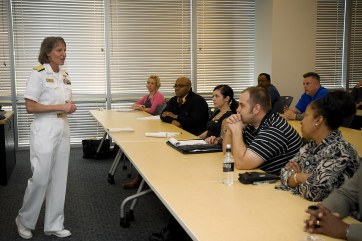Photo : pixabay
Can you imagine a world without batteries? There would be no cell phones, no laptops or any other cordless device you can think of. Modern civilisation is addicted to this piece of technology and it has made such a big impact on our productivity that nobody could even imagine what it would be like to live without them. Even though lithium batteries are a relatively new discovery, it has found thousands of applications, and more are found each day.
The funny thing is that most people take this technology for granted. Only a small number of people want to know what makes these batteries work and how they power up our most delicate possessions.
The Chemistry Behind Lithium-Ion Batteries
Lithium batteries are made from power-generating cells. These compartments include a positive electrode, a negative electrode and an electrolyte between these electrodes. Even though there are thousands of different lithium-ion batteries used on the market, they all basically work on the same principle.
When a device with a Samsung 25r lithium-ion battery is connected to a charger, the positive electrode gives up some of the lithium-ions while the negative electrode gathers the lithium-ions. Because the positive and negative electrodes can't touch, the lithium-ions travel through the electrolyte, keeping everything as stable as possible. If the positive and negative electrode were to touch, it's very likely that the device would catch fire or even explode.
When you're using your device, the same thing happens but in a different direction. Lithium-ions from the negative electrodes are released and after travelling through the electrolyte, they stay on the positive electrodes. During this process, some of the lithium-ions get caught in the electrolyte which makes the batteries capacity smaller over time.
Where Are Lithium-Ion Batteries Used?
Lithium-ion batteries are used in a wide variety of applications. The largest number of lithium-ion batteries are used in consumer electronics such as mobile phones, laptops, tablets and similar portable devices. As technology evolves, lithium-ion batteries are used in other industries as well. Nowadays, lithium-ion batteries can be found in power-tools, gardening tools, golf carts, electric cars and other electric vehicles used in manufacturing facilities.
When people think about lithium-ion batteries, they think about small, rectangle-shaped objects, but the truth is that lithium-ion batteries come in all shapes and sizes. They are rectangle-shaped and small for mobile phones, but they're much larger for electric cars and other electric vehicles.
The biggest lithium-ion battery was made by Tesla Inc and it's specifically made for Neoen in Australia. It's a 100-megawatt battery that is used to store energy used by households all over South Australia. It's named the Hornsdale project and it was built two years ago because coal-fired plants were shut down. With much less power available to the Australian public, an alternative had to be made quickly!
The Hornsdale Power Reserve was built in 2017, and just in the first year of operation, it has saved almost $40 million in costs.
The best thing about lithium-ion batteries is that they're rechargeable. They have a much bigger capacity than any other types of batteries currently available on the market and they also have much more power than other batteries. Although there are some limitations to using lithium-ion batteries, researchers around the world are improving this technology as we speak. New improvements and inventions can be found if you click here.
It's almost certain that new kinds of batteries will be invented in the next decade or two that will completely replace lithium-ion batteries and when that happens, we'll have much more environmentally-friendly products to use.
* This is a contributed article and this content does not necessarily represent the views of universityherald.com









